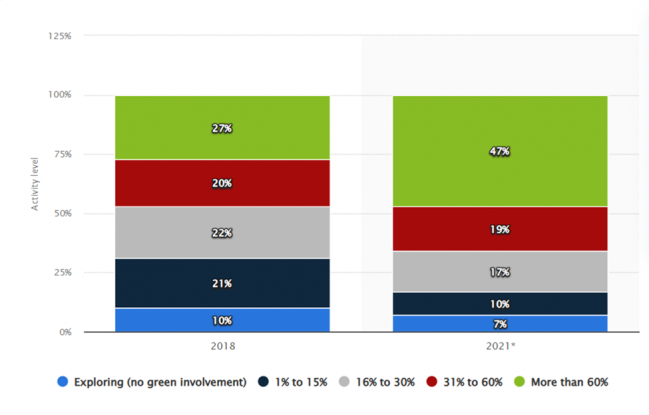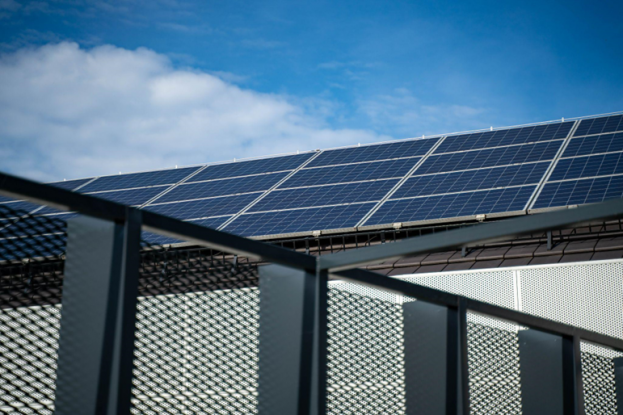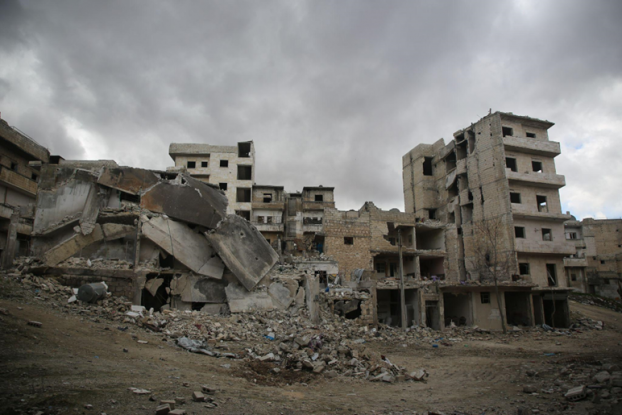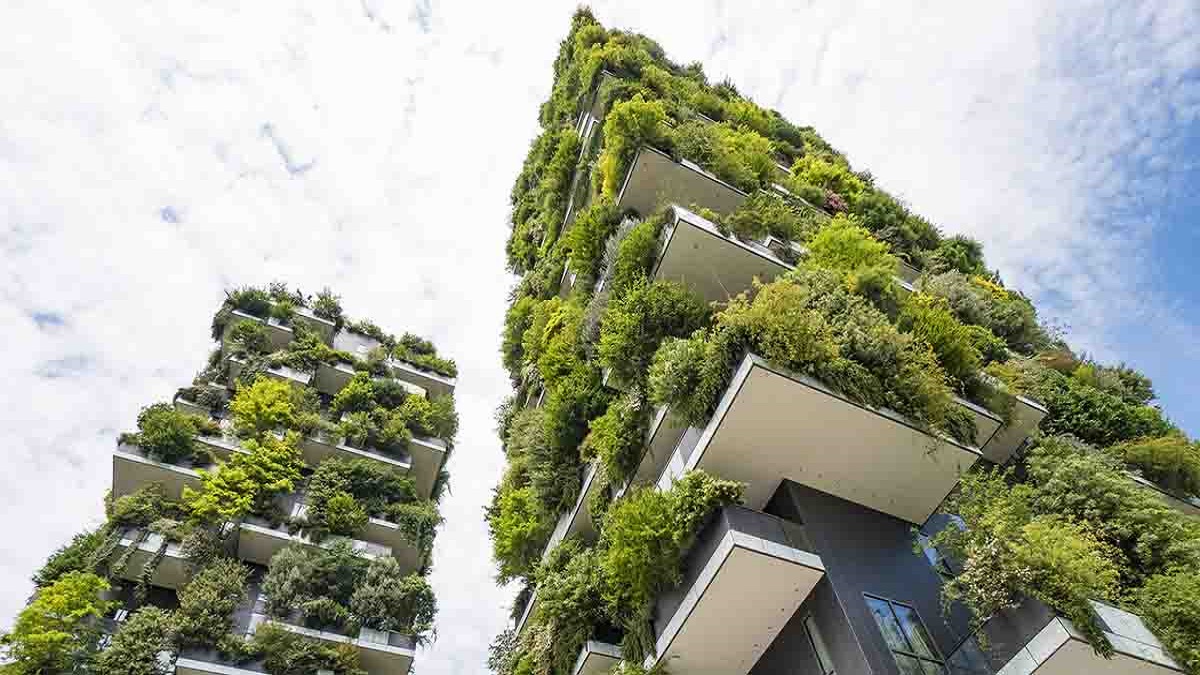Okay, guys, I’m about to spill the tea on a dirty little secret of mine – I’m a certified hoarder. Yep, I can’t resist the urge to buy things I don’t need, and my apartment is a hot mess of clutter. But as much as I love collecting useless stuff, I know that I need to get my act together if I want to save the planet (and my sanity). And the same goes for the construction industry in Pakistan – it’s time to clean up our act and start implementing sustainable practices for a brighter, greener future.
Let’s start with the problem: unsustainable construction practices
Did you know that the construction industry is responsible for 23% of air pollution in Pakistan? That’s right, all those fancy buildings are not just eye candy, but also air poisoners.
And that’s not all – unsustainable practices also contribute to water scarcity, energy inefficiency, and waste generation. In fact, Pakistan generates around 20 million tons of construction waste every year, which is equivalent to 35% of the country’s total annual waste.
So, what can we do about it? Enter green buildings. Green buildings are designed to be environmentally sustainable, energy-efficient, and cost-effective. They use renewable resources, reduce waste, and minimize the impact on the environment. In other words, they’re like the Marie Kondo of buildings – they spark joy while also being environmentally responsible.
Though Pakistan is lacking in green buildings, the worldwide pace is also slow. Here you may find the progress from 2018 till 2021 for green buildings construction.

But what makes a building green?
Here are some key features:
Energy efficiency
Green buildings use less energy than traditional buildings, thanks to features like insulation, efficient lighting, and renewable energy sources like solar panels.

Water efficiency
Green buildings use less water than traditional buildings, thanks to features like low-flow faucets, rainwater harvesting systems, and water-efficient landscaping.
Sustainable materials
Green buildings use sustainable and eco-friendly materials like bamboo, straw bale, and recycled steel.
Indoor air quality
Green buildings prioritize the health and wellbeing of occupants by using non-toxic materials and ensuring proper ventilation.
Waste reduction
Green buildings reduce waste through features like recycling programs and composting systems.

Now, you might be thinking, “That all sounds great, but is it really necessary?” Well, let me hit you with some numbers. According to a report by the Pakistan Green Building Council, green buildings can reduce energy consumption by up to 50%, water consumption by up to 40%, and carbon emissions by up to 35%. And if that’s not enough to convince you, consider this: green buildings can also save money in the long run. A study by the World Green Building Council found that green buildings have lower operating costs, higher occupancy rates, and higher rental and resale values.
So,
What are some examples of green buildings in Pakistan?
One notable example is the Arfa Software Technology Park in Lahore, which was designed with sustainability in mind. The building uses a rainwater harvesting system to reduce water usage, and solar panels to generate electricity. As a result, it has achieved a LEED Gold certification – an internationally recognized standard for green buildings.
Another example is the Serena Hotel in Islamabad, which is the first hotel in Pakistan to receive a LEED Gold certification. The hotel uses energy-efficient lighting, low-flow faucets, and a waste segregation system to reduce its environmental impact.
But green buildings aren’t just for fancy corporate buildings and hotels. They can also be applied to affordable housing and public buildings. The Hunar Foundation, a non-profit organization in Pakistan, has built several green schools in underprivileged areas. The schools use natural ventilation, energy-efficient lighting, and water-efficient plumbing to reduce operating costs and environmental impact.
Challenges of Implementing Green Buildings in Pakistan
Now, as much as I love green buildings (they’re like the Priuses of the construction industry), I have to admit that they’re not without their challenges. One of the main challenges in Pakistan is the lack of awareness and education about sustainable construction practices. According to a survey by the Pakistan Green Building Council, 71% of construction professionals in Pakistan have no knowledge of green buildings.
Another challenge is the high cost of implementing green features. While green buildings can save money in the long run, the upfront costs can be a barrier for many builders and developers. Additionally, there is a shortage of skilled labor and trained professionals in sustainable construction practices in Pakistan.
Promoting Sustainable Construction Practices in Pakistan
So, how can we overcome these challenges and promote sustainable construction practices in Pakistan?
The first step is education and awareness
We need to educate builders, developers, and the public about the benefits of green buildings and sustainable construction practices. This can be done through workshops, training programs, and public awareness campaigns.
Another step is to incentivize green building practices
This can be done through tax incentives, grants, and subsidies for builders and developers who implement green features. The government can also promote green buildings by incorporating green building standards into building codes and regulations.
Finally, we need to invest in research and development of sustainable materials and technologies
This can help reduce the costs of green building practices and make them more accessible to builders and developers in Pakistan.
Alright, folks, we’ve covered a lot of ground in this blog post. We’ve learned about the problem of unsustainable construction practices in Pakistan, the benefits of green buildings, some examples of green buildings in Pakistan, the challenges of implementing green buildings, and how to promote sustainable construction practices in Pakistan.
But let me leave you with one final stat that really drives home the importance of sustainable construction practices. According to the United Nations, buildings and construction are responsible for 39% of global carbon emissions. That’s almost half of all carbon emissions, folks! So, if we want to make a real impact on the environment and combat climate change, we need to start with sustainable construction practices.
In conclusion, green buildings are not just a trend or a fancy buzzword – they’re a necessity for a sustainable future. Pakistan, like many countries, is facing environmental challenges, and green buildings are a crucial part of the solution. By educating ourselves, incentivizing green building practices, and investing in sustainable technologies, we can create a brighter and more sustainable future for Pakistan and the world.

















